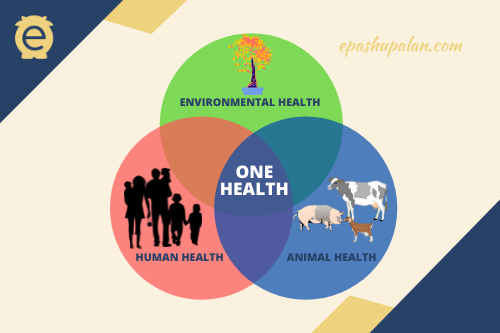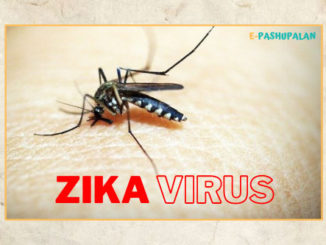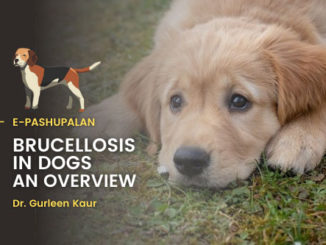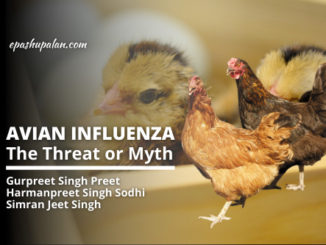A recent report by WHO specifically investigates the role of the environment, from the health perspective, focusing on zoonotic diseases (in which animals are a “vehicle” for disease), expanding to include some noncommunicable diseases, such as those caused by chemicals that may contaminate food of animal origin, and injuries caused by contacts with animals, such as bites.
One Health is an integrative, cross-disciplinary approach to designing and implementing actions and policies at the human–animal–environment health interface. However, the role of the environment in this triad has often been overlooked. One Health has traditionally focussed on communicable diseases, such as zoonoses and diseases caused by antimicrobial-resistant pathogens and unsafe food.

The new report – “A health perspective on the role of the environment in One Health”, coordinated by the WHO European Centre for Environment and Health, builds upon the global and regional plans of action that WHO has been developing with the other One Health partners: the World Organisation for Animal Health (WOAH, formerly OIE), the Food and Agriculture Organization of the United Nations (FAO) and the United Nations Environment Programme (UNEP).
The report describes the role of the environment in One Health as trifold.
- The environment acts as a reservoir, where nutrients and living organisms are accumulated and transported. This includes disease agents such as bacterial species and antimicrobial resistance genes together with organic and inorganic residues, chemicals and metals.
- The environment is the substrate for chemical and ecological processes that provide a myriad of ecosystem services to humans, including those essential for human health. In the disease context, environmental processes transform chemicals to bioavailable (which can be absorbed by the body) and bioaccumulating (which build up over time, for example through contaminated food) forms. Evolutionary processes can create new pathogens that may infect humans or propagate antimicrobial-resistant microbes and genes.
- The environment is a health mediator, inducing positive or negative health effects on animals and humans.

Changes in environment
Anthropogenic stressors to the environment, such as land use change, biodiversity decline, climate change and environmental pollution, cause or exacerbate animal-mediated diseases.
- Land use change causes ecosystem fragmentation that enhances human contact with natural areas and wildlife. Habitat degradation – such as through agriculture, urbanization and deforestation – causes proliferation of species that are adapted to humans and live in closer contact with them. Increased environmental stress impairs wildlife immunity, causing shedding of pathogens to the environment and infection of other individuals and species, including humans.
- Biodiversity decline is strongly linked to increases in prevalence and an elevated risk of zoonotic disease and compromises the dilution effect that often reduces pathogen spread and infection rates in humans. Globally, land use change as well as wildlife hunting and trade are major causes of biodiversity loss that are also central drivers of transmission of zoonotic pathogens to humans.
- Climate change and rising temperatures lead to the spread of zoonotic hosts and vectors, increasing the human population that is exposed to vector-borne diseases. Rising temperatures further stimulate the rate of reproduction of both pathogens and vectors. Foodborne infections also proliferate with increasing temperatures.
- Pollution accumulates in the environment and further in the fatty tissues of animals, making food the main source of human exposure to pollutants, causing some noncommunicable diseases such as cancer. Accumulation of antibiotics in the environment for prolonged periods promotes gene exchange and mutations within organisms that create new resistant pathogens. Finally, wildlife contact with humans in rural and residential areas can lead to injuries, attacks and bites.
- The report concludes with some forward-looking suggestions. WHO – both globally and within the WHO European Region – has multiple strategies and documents addressing ecosystem protection, climate change action and the hazardous effects of chemicals.
Within this context, efforts to restore natural habitats, biodiversity and clean environments could be incorporated into these strategies as matters of urgency to protect human health. Surveillance of pathogens and antimicrobial resistance genes in the environment using environmental genomics methods could take place alongside growing surveillance within wildlife. Finally, to foster cooperation across borders and disciplines – ecologists, environmental scientists and evolutionary biologists should gain a more prominent role at the One Health table.
Likewise, awareness-raising and capacity-building within the industrial, agricultural, urban planning, food safety and engineering sectors could promote practices that better protect the health of the environment, animals and humans.






Be the first to comment